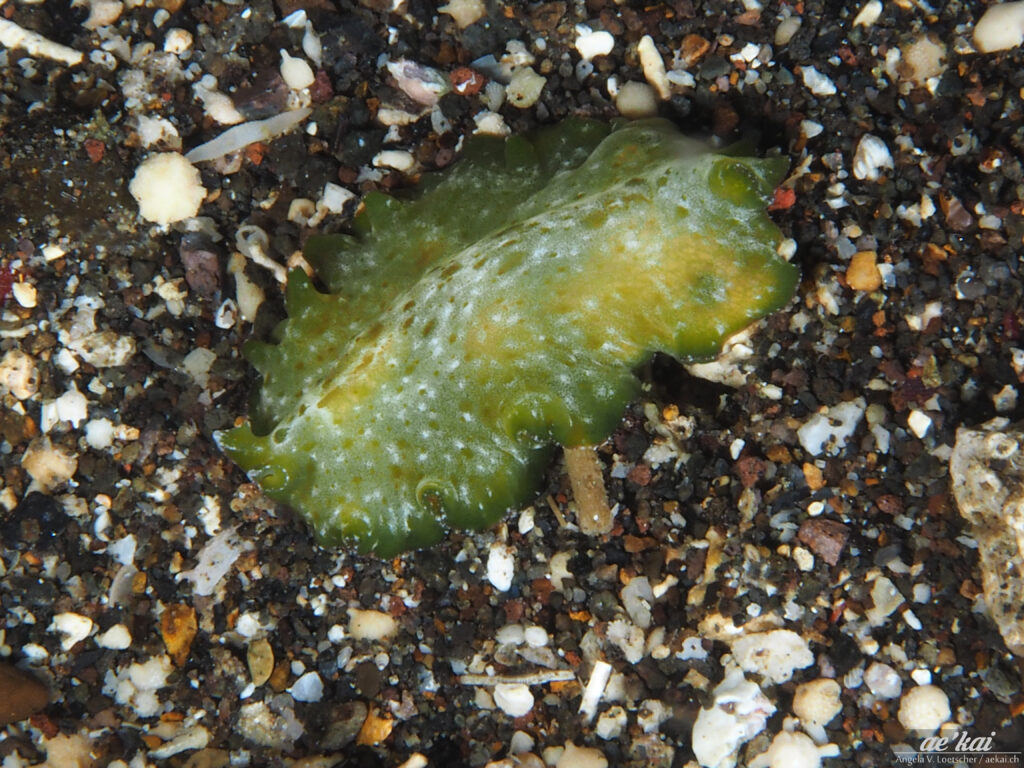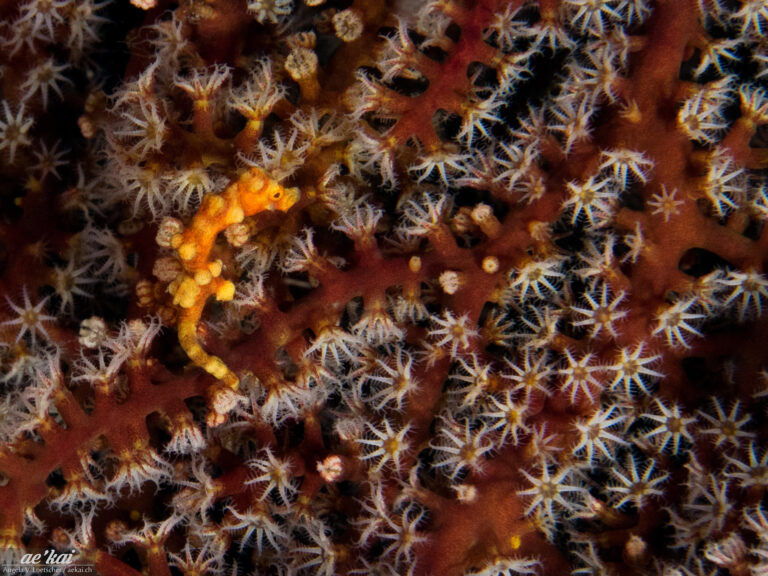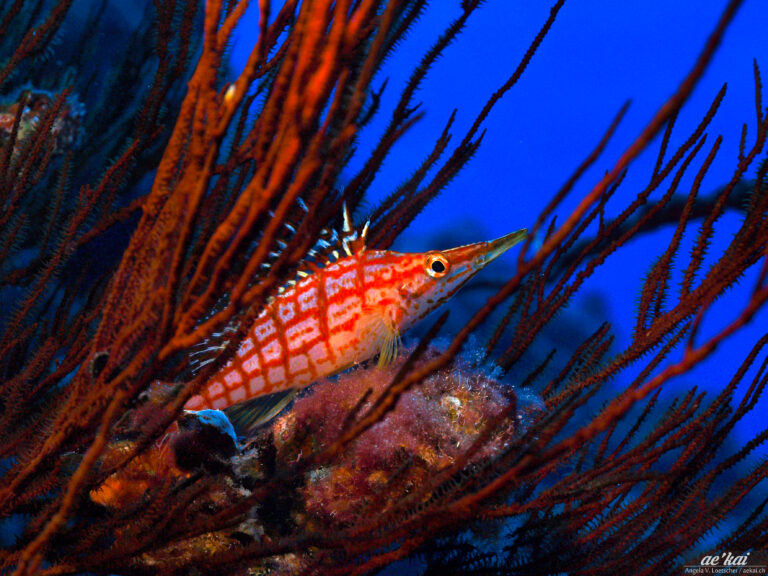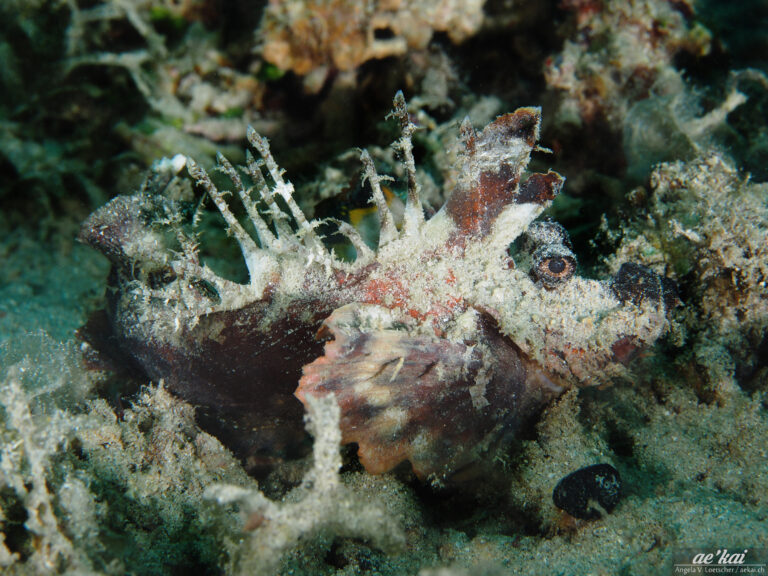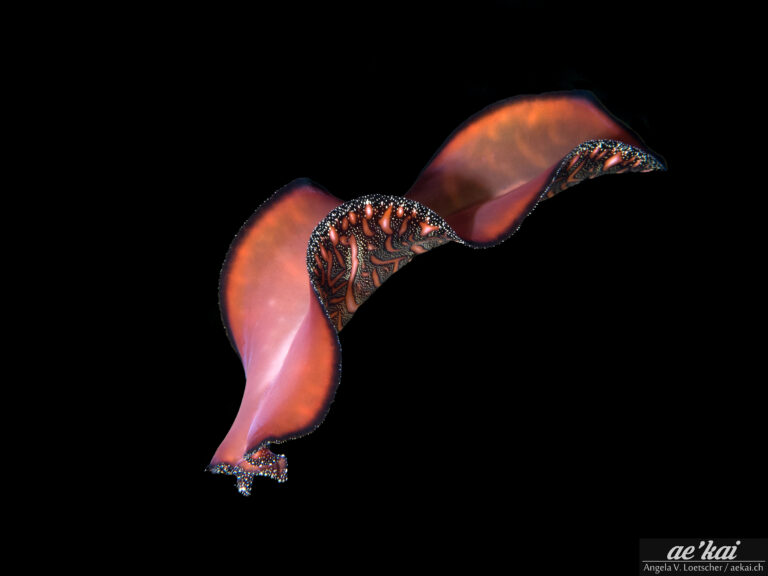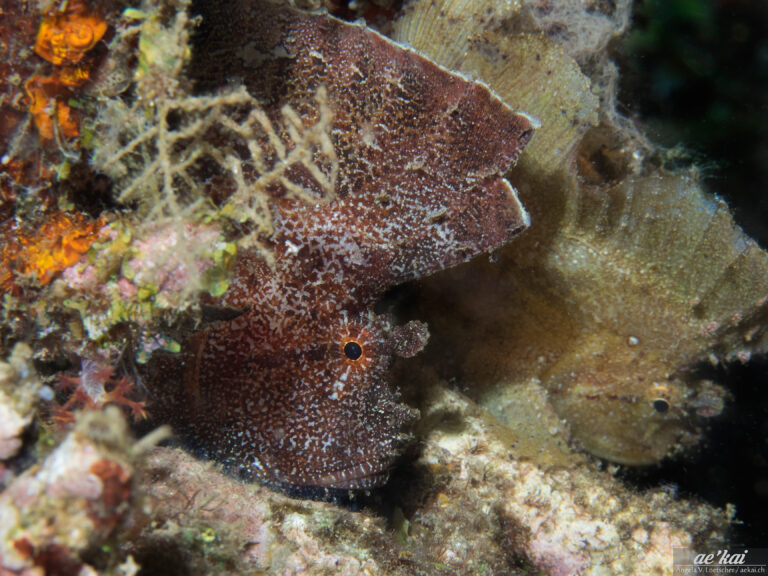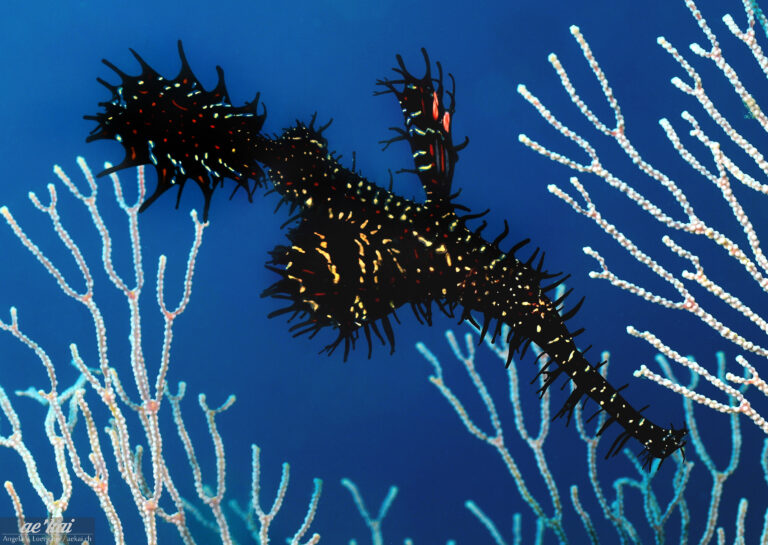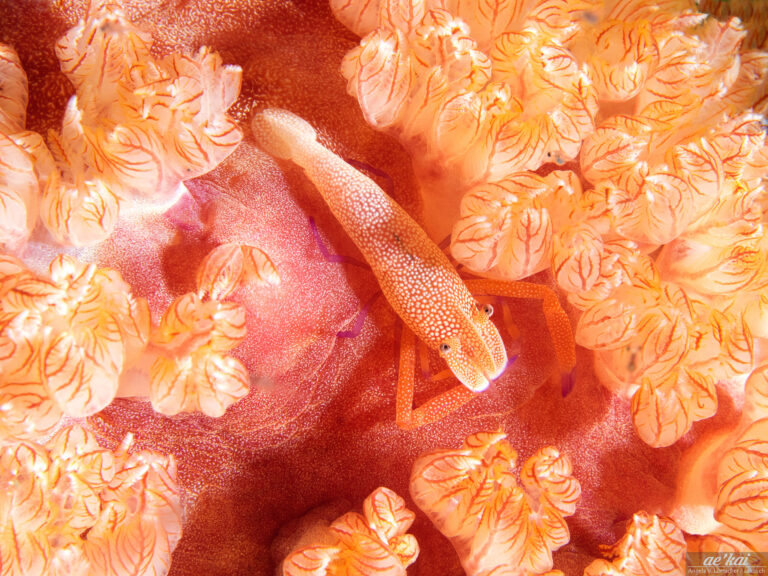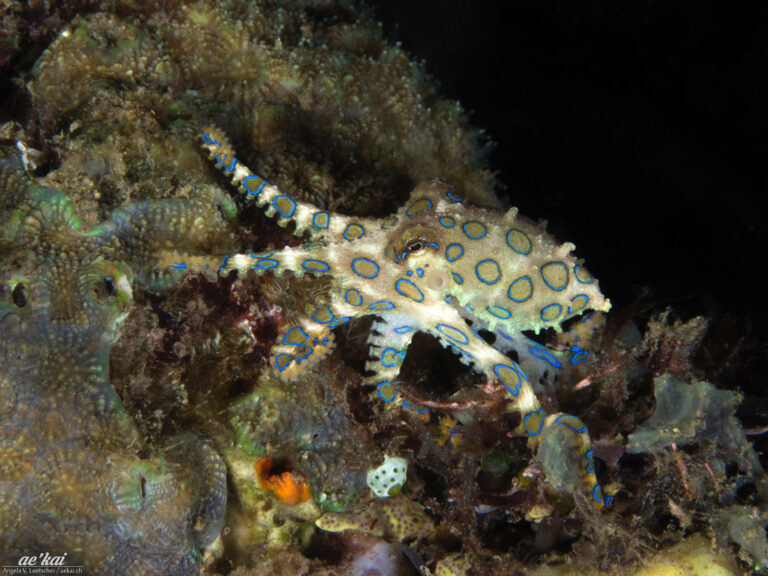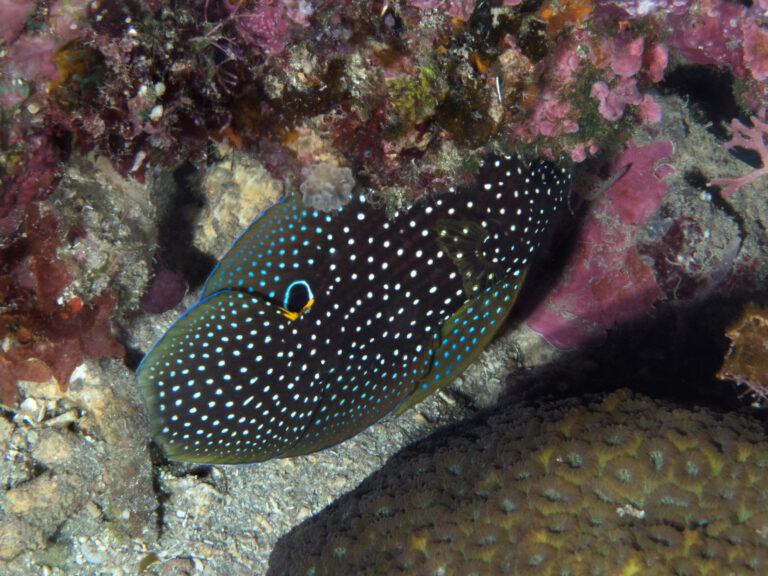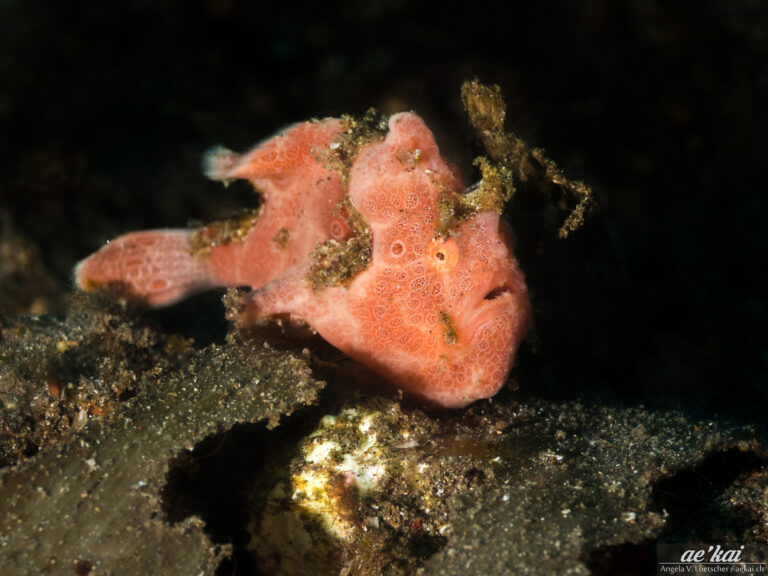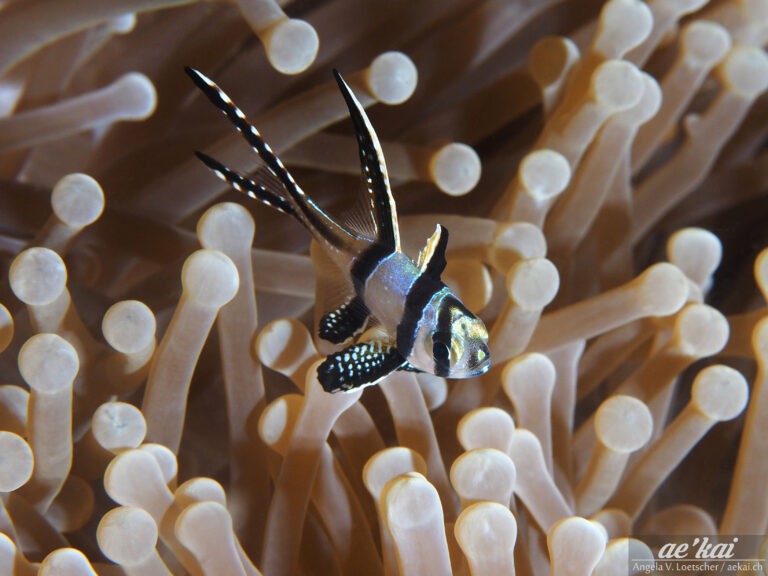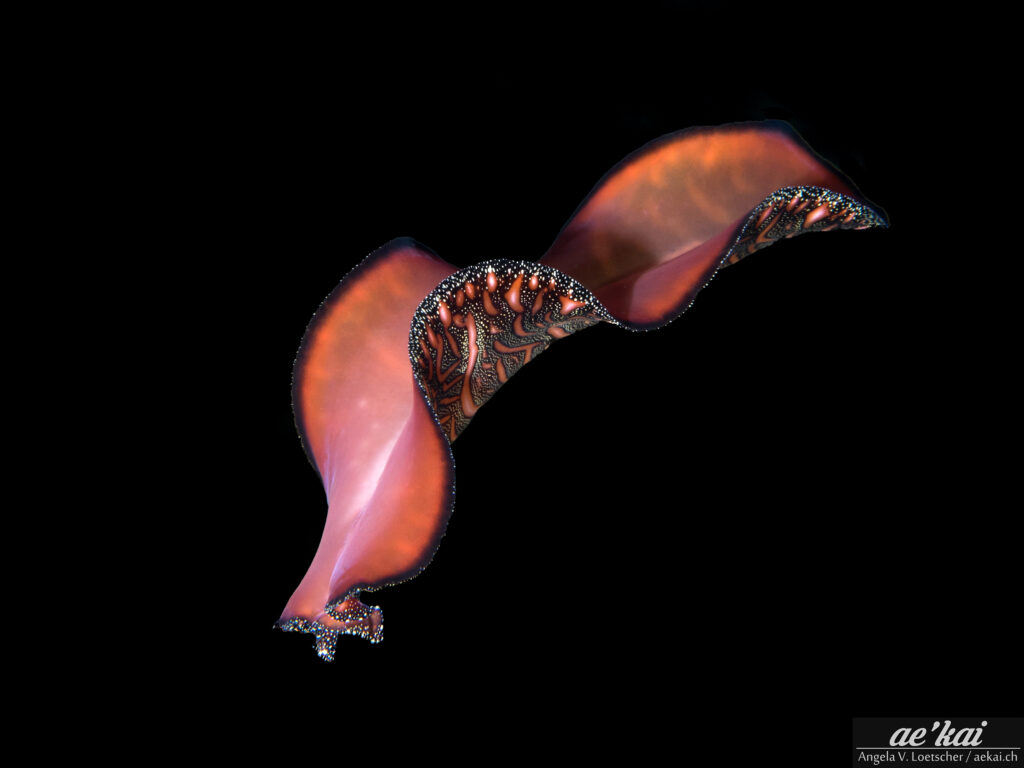
EN: Flatworms
DE: Freilebende Plattwürmer | Meeresstrudelwürmer
Order
Free-living Flatworms
(Polycladida)
Size
1 mm to 30 cm
Diet
Most are carivores
Distribution
Tropical
Oceans
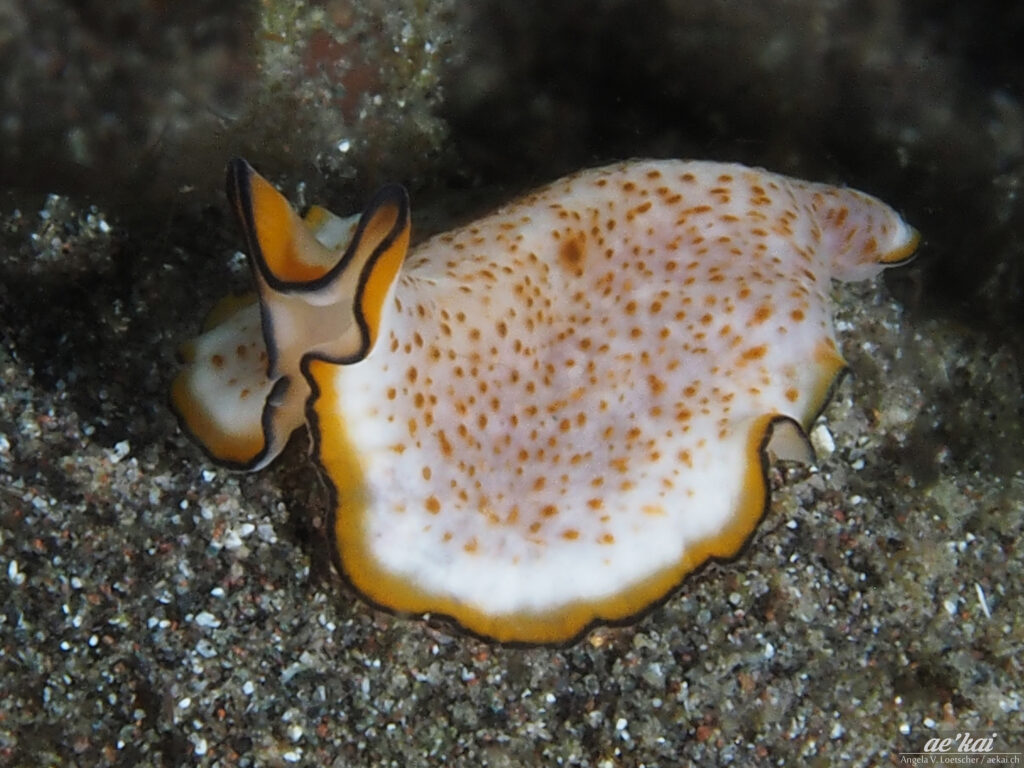
(undescribed species)
The order of marine flatworms includes a group of free-living flatworms. From their origin, marine flatworms are even related to parasitic tapeworms and are in the same phylum. The other parts of the phylum make up about three quarters of it. Marine flatworms are mainly found in coral reefs of tropical seas and are predators.
Although they have been known to science for over 150 years, not much is known about them.
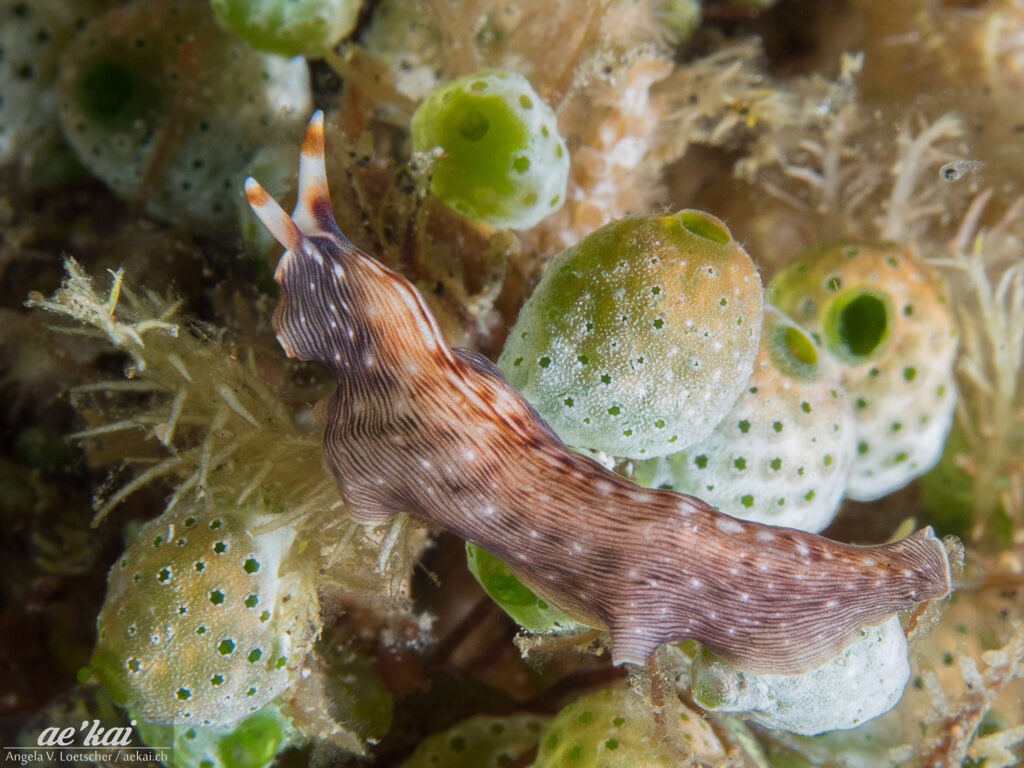
(undescribed species)
Physique
Like their other flatworm relatives, they are very flat and never more than a few millimeters thick, because they have no respiratory organs or blood transportation systems. This function is performed by certain cells that lie close to the body surface. They can become with its 1 mm to 30 cm not only quite long, but some of them also quite wide. Some are rather round, some rather oval and narrow. The oval species often imitate nudibranchs (sea slugs), with which they are often confused. More about the characteristics influenced by imitation can be read further down under “Mimicry”. With most types, the skin-surface is flat and smooth, it can also have small tubercles or even rhinophore-like appendages at the head-end.
The head end also has two tentacle-like folds, which are not only used for mimicry, but have a different purpose: The receptors they contain are very light-sensitive sensory organs. Together with the eye-spot in the brain (if you can call it that), they enable the flatworm to determine the direction from which the light is coming. Mechanoreceptors, so to speak “mechanical receivers”, and other cysts provide the flatworm with information about gravity (where it is located), while chemical receptors help in the search for food as well as partners. So there are a lot of receptors for such a small, flat and simply built body.
Their ability to regenerate is very impressive and they can easily withstand an attack by predators. When attacked, they disintegrate into different parts, each of which can regenerate into an individual. This impressive feature makes it even more difficult for researchers to catch them, to preserve them and to systematically research them.
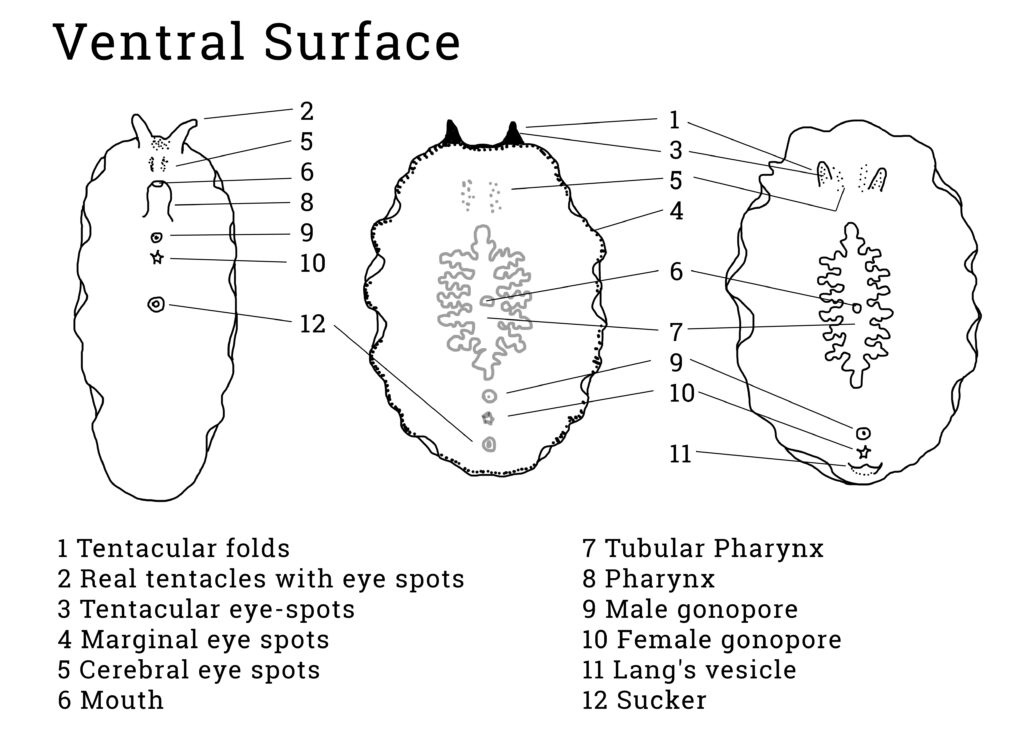
Locomotion
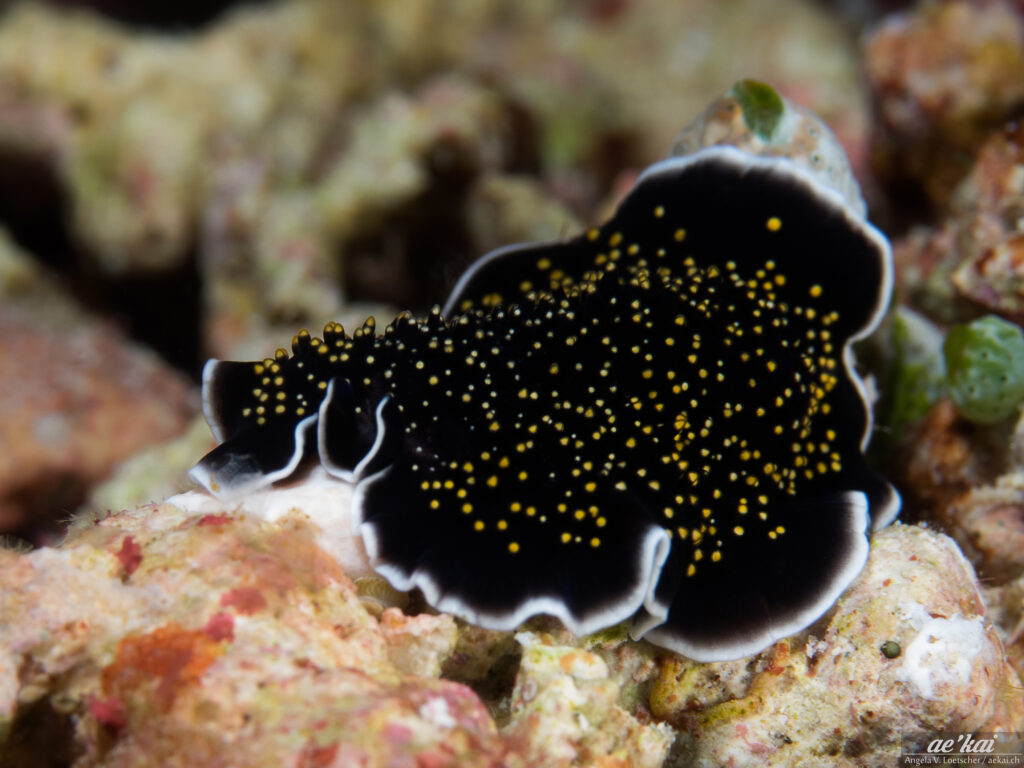
(undescribed species)
The physique of these flatworms makes them malleable and adaptable to the ground surface, so that they can crawl over pretty much anything. Thanks to cilia on the surface of their skin, they are agile and move quickly. They have two types of muscles, the outer ring muscles and the inner longitudinal muscles. Some species can even swim by tensing and relaxing their longitudinal and ring muscles. The edges of the worm move like a ruffle of a skirt and resemble some species of nudibranchs.
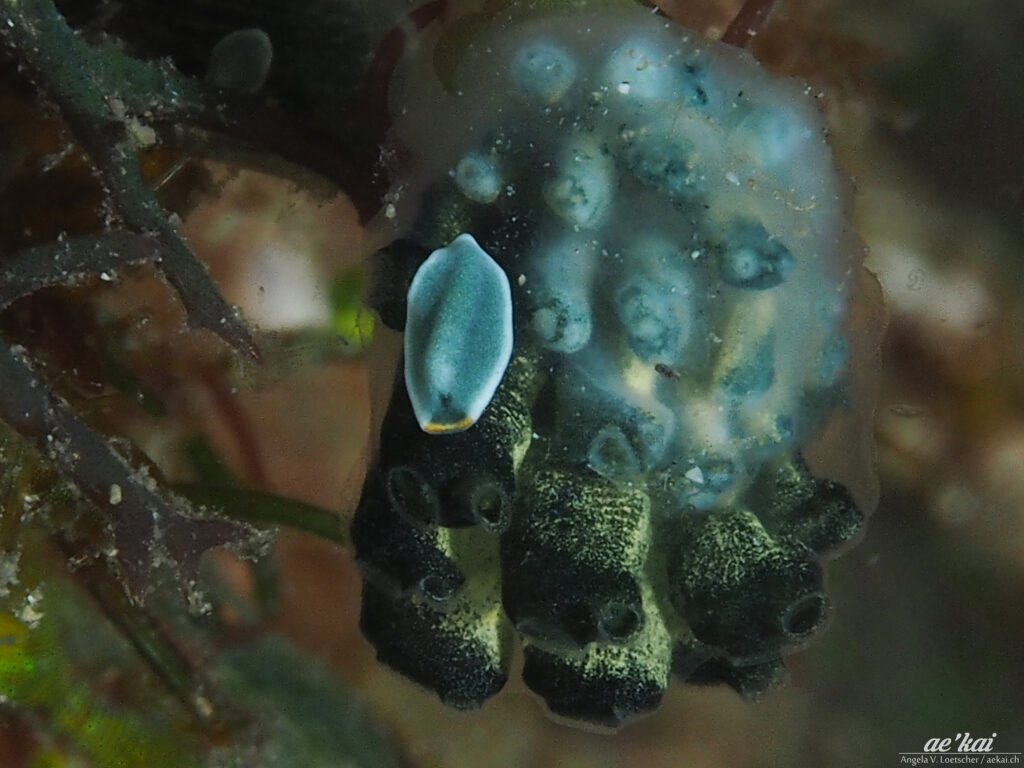
Cycloporus venetus
Reproduction
Flatworms are hermaphrodites and always have female and male sexual organs. When two worms meet, a swirling penis fight ensues. Both worms wiggle around each other and each tries to fertilize the other worm with its penis. During this fight they sting wildly and sometimes it leads to bad injuries. The winner stays in position for a few minutes and deposits the sperm through the skin of the other worm. The skin absorbs the sperm, which magically finds its way to the eggs and fertilizes them. Studies in some species have shown that marine tapeworms always want to give more sperm than they are ready to receive. Thus, the “female” will always try to evade, while it tries to win as “males” at the same time. This leads to the fact that the better “stinger” and consequently the stronger one versus a weaker partner, gets to successfully reproduce. This in turn leads to more successful offspring and ensures the survival of the species. The fertilized eggs are deposited as a single-layer, irregular egg mass close to a food source. After a development period of about ten days, the small, transparent larvae hatch.
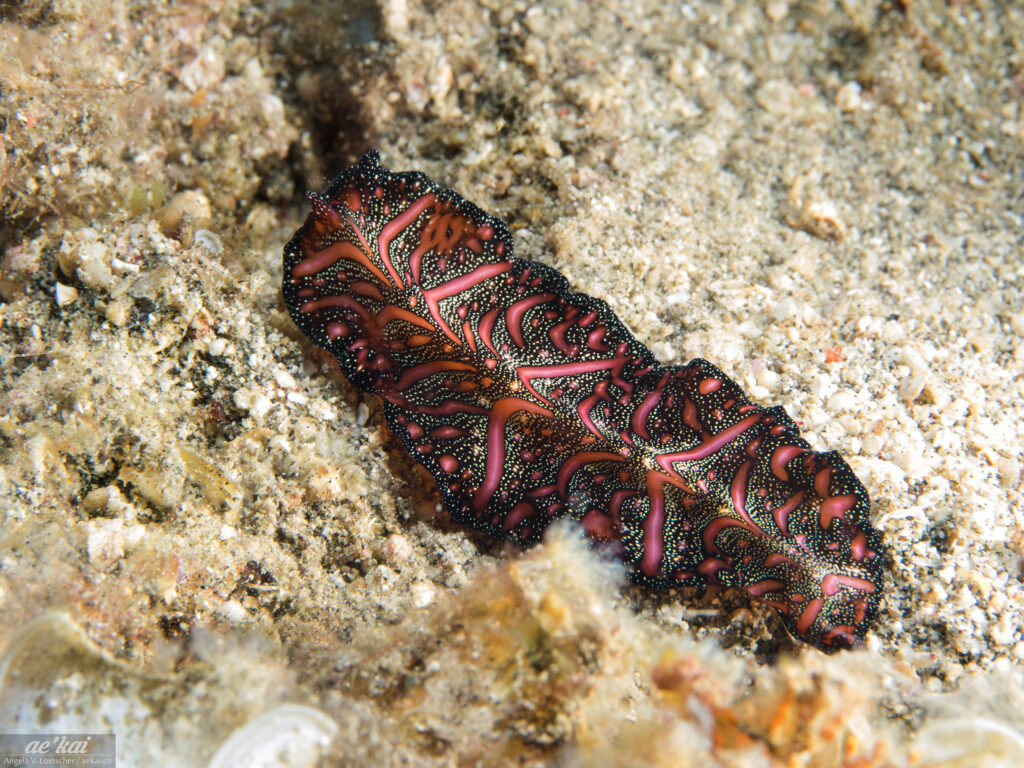
(Pseudobiceros bedfordi)
Behavior
Most of the marine flatworms are octurnal hunters to better protect themselves from predators. During the day they usually hide in small caves, niches, under stones or in the middle of colonies of their favorite food. They are carnivorous predators and feed mainly on sedentary animals like sponges, coral polyps, bryozoans, etc. Once they have found food, they put their throat, which is on the belly side, over their prey and digest it with the help of certain enzymes. The “vegetarian” marine flatworms feed on green algae and diatoms.
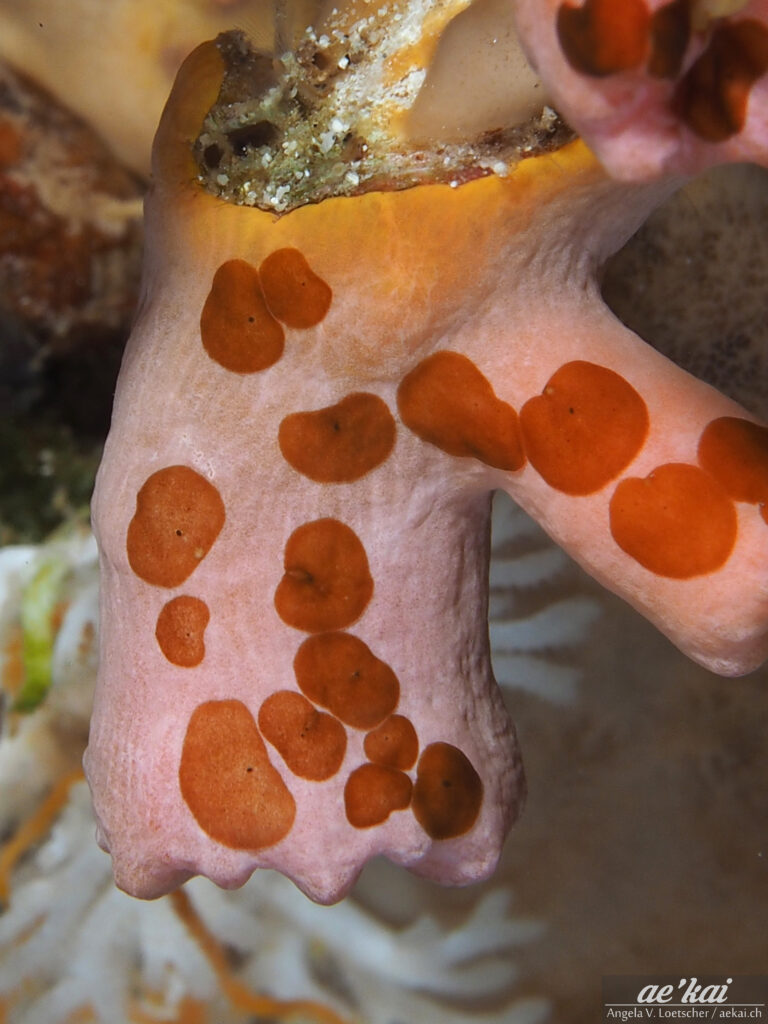
The red spots are the worms. Seen here on tubastrea.
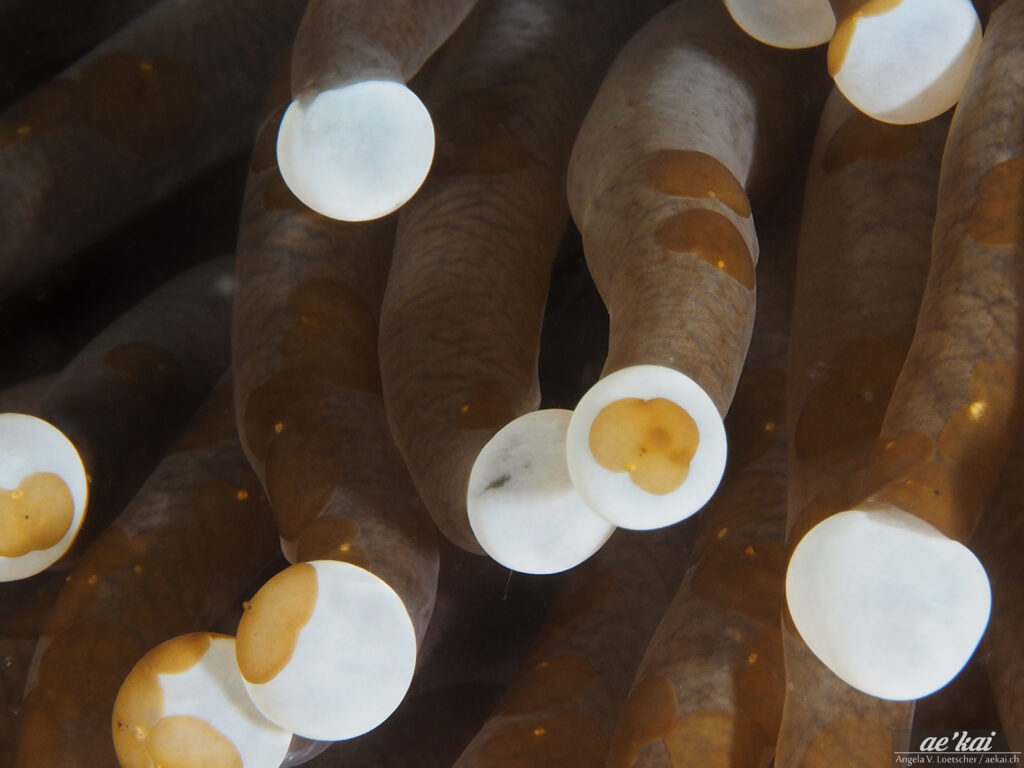
The brown spots are the worms. Here visible on an anemone, but most often on bubble coral.
Mimicry
In any case, marine flatworms have a signalling coloration that is intended to deter predators by warning them. Some species imitate obviously poisonous nudibranches (Z.B. warthogs or splendor-snails) by their coloring. For many species it has not yet been researched whether they are really inedible for predators (so-called Müller’s mimicry) or just pretend to be inedible by imitating a poisonous animal (Bates’ mimicry, meanwhile known as protective mimicry = imitation of an inedible animal by harmless animals to deceive predators).
In mimicry, too, the rule applies: the more, the better. Some patterns seem to be shared by several quite different worm and mollusc species, but usually only one species of the animals is poisonous. These patterns seem to be especially successful against predators. The more inedible animals share a pattern, the better predators learn to take the pattern seriously, the better imitating non-toxic species are protected.
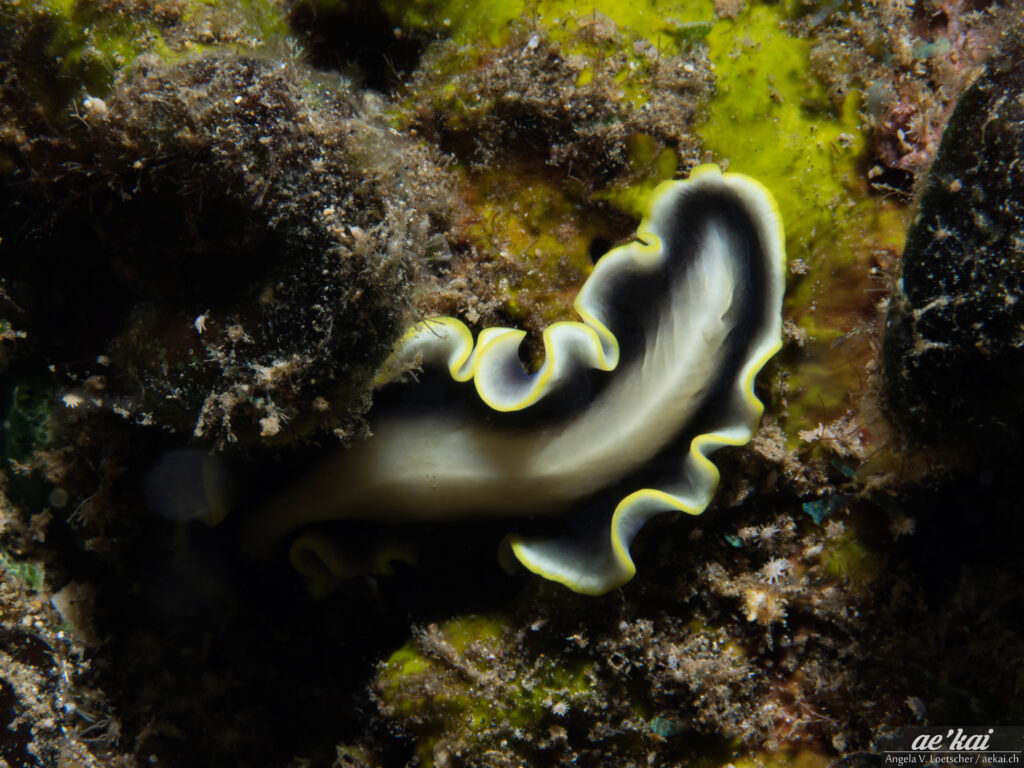
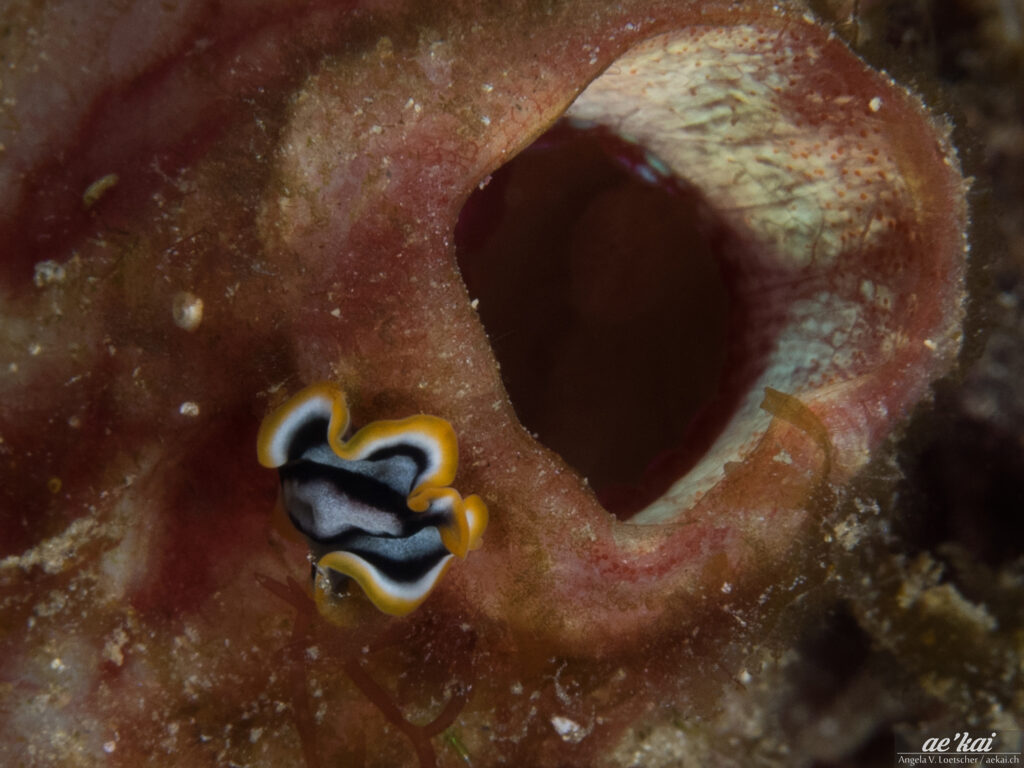
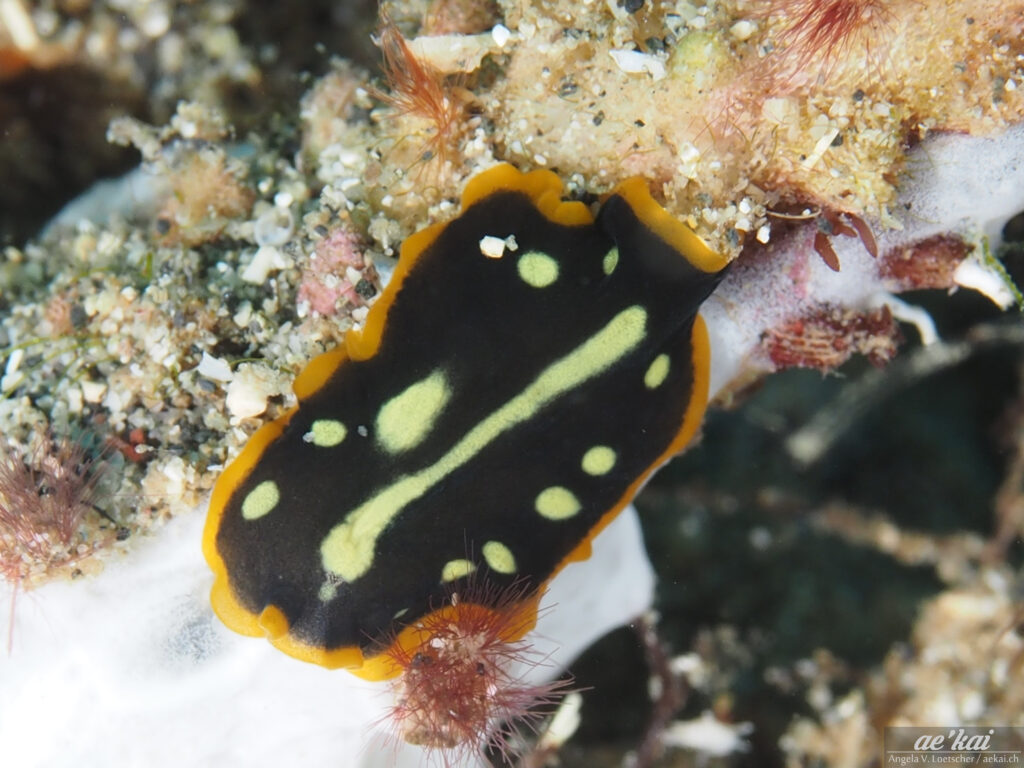
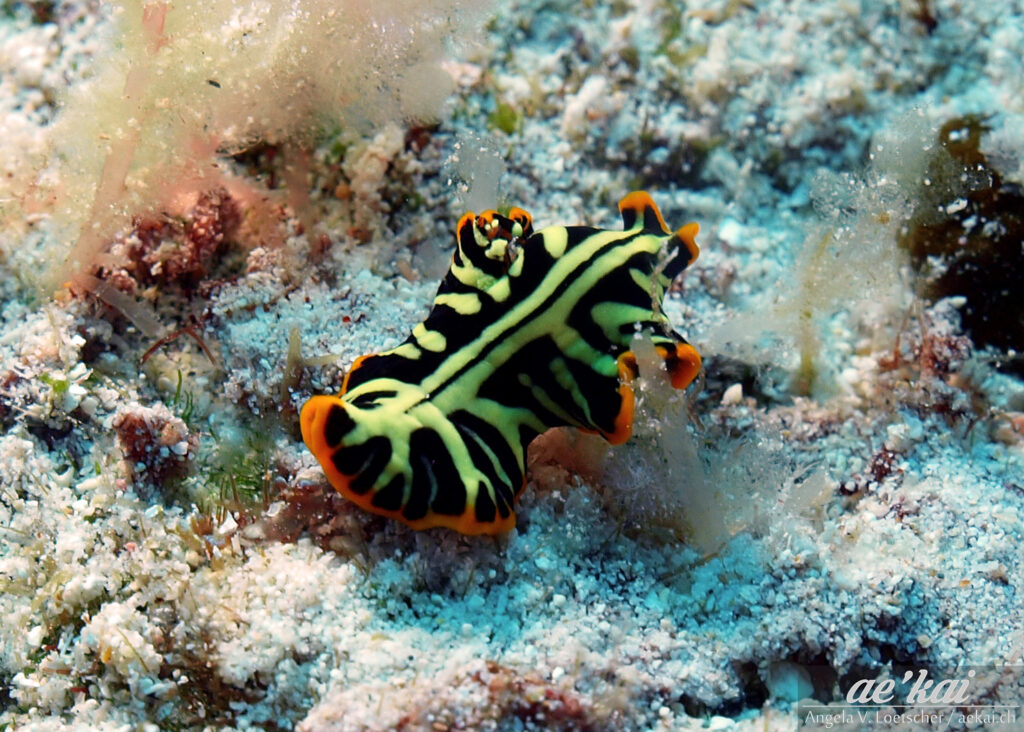
Toxins
In some marine flatworms, the signal coloration is meant to be deadly serious, for example in Pseudoceros concineus and Planocera tentaculata, in which the toxins Staurosporin and Tetrodotoxin have been detected.
Staurosporine belongs to a group of alkaloids known for highly effective antibiotics and strong insecticides. It leads to non-selective cell death. The same toxin has not only been detected in Pseudoceros concineus, but also in one of the sea squirts preferred by the worm. Whether the worm is able to produce the toxin itself is still unclear. However, it is suspected that the worm only becomes toxic after eating that particular sea squirts. Researchers hope to understand Staurosporin’s mode of action enough to be able to use it as a targeted therapy against cancer. Previous experiments do not seem to make it successful enough for use, but still exciting enough for research.
If one studies the poisonous underwater animals, Tetrodotoxin is soon an old acquaintance because of its relatively wide occurrence in very different animals. It is a highly effective and deadly nerve toxin, which brings the body to a standstill relatively quickly by paralysis (individual body parts, whole body and finally respiratory paralysis). Tetrodotoxin is usually known as the poison of the puffer fish, but has already been detected in Blue-ringed Octopus, some crabs, snails and even starfish. Here too, the researchers are interested: In small doses, Tetrodotoxin has an analgesic effect and could thus find a possible application in cancer treatment. Another exciting aspect of Tetrodotoxin is that it is used as an antidote to Batrachotoxin, the spasm-causing toxin of the South American poison dart frogs. Batrachotoxin (approx. ten times stronger than Tetrodotoxin and the most highly effective in its toxin group) has in turn also been detected on the plumage of some bird species in New Guinea, which is on the other side of the world from the poison dart frogs. Neither frog nor bird is able to produce Batrachotoxin themselves, the source seems more likely to be a genus of beetles, which are found in both distribution areas of the poison. The only question left is how the antidote gets into the fish, worm, starfish or octopus.

(Pseudoceros lindae)
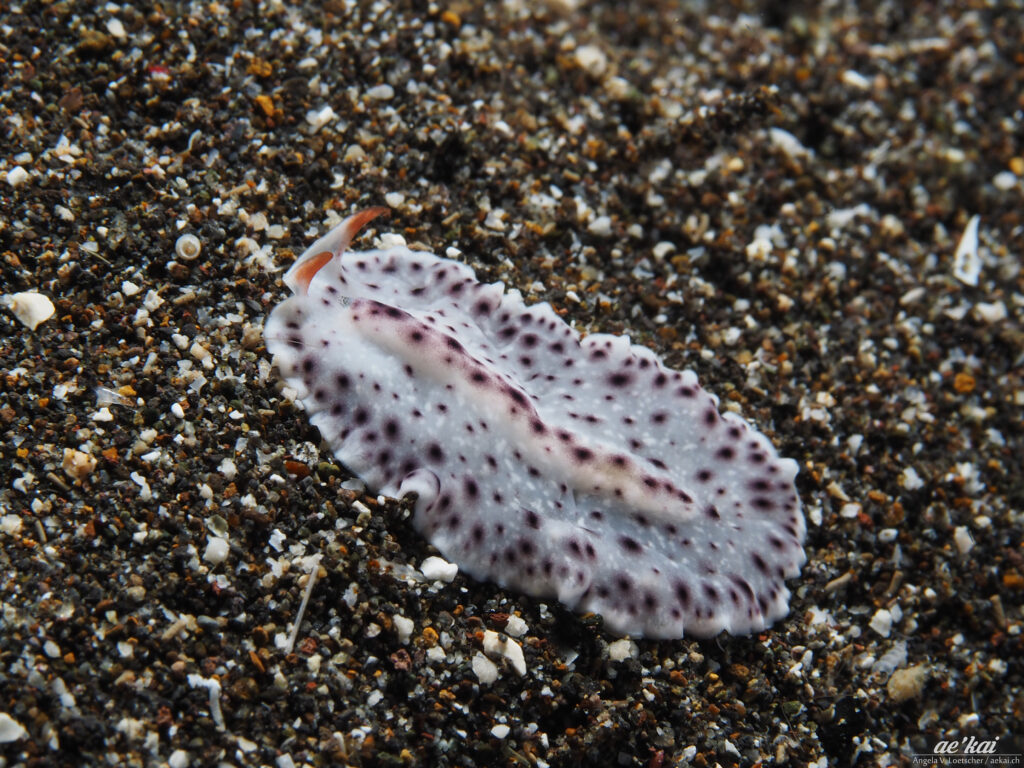
(Undescribed species)
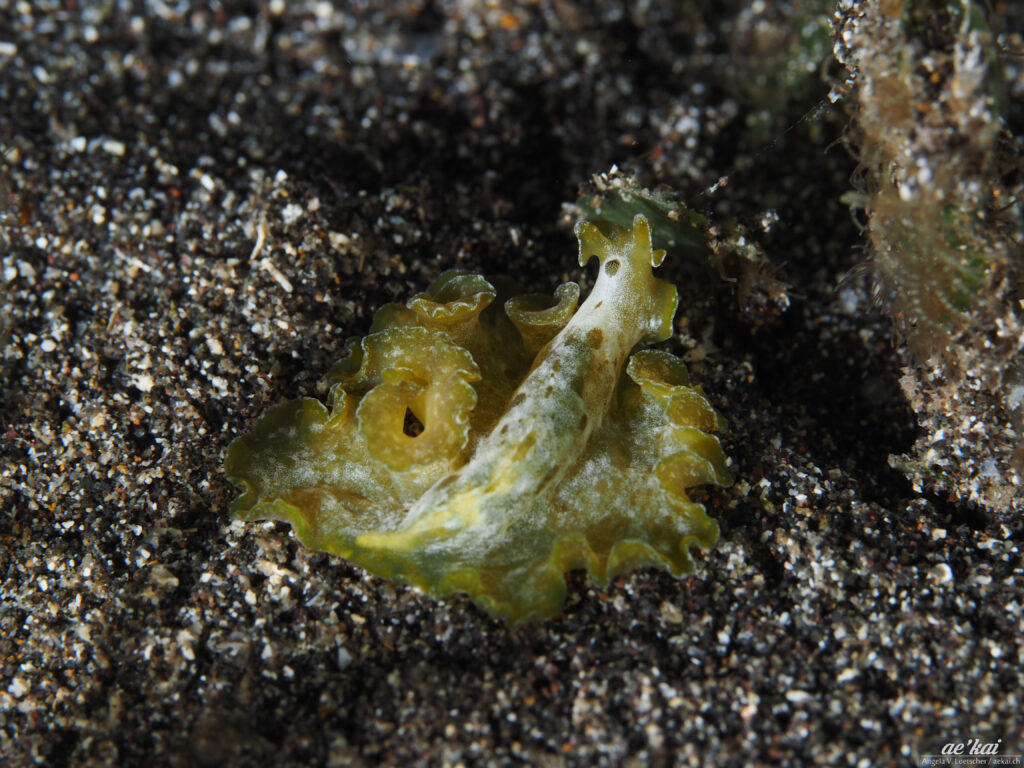
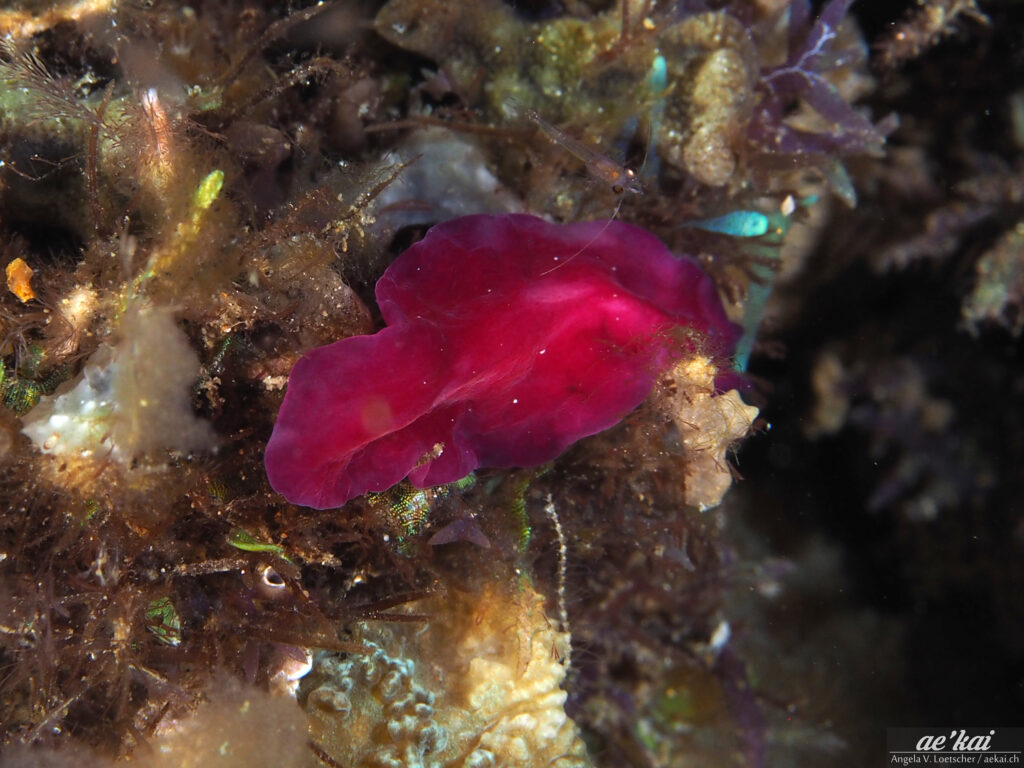
(Pseudoceros rubronanus)
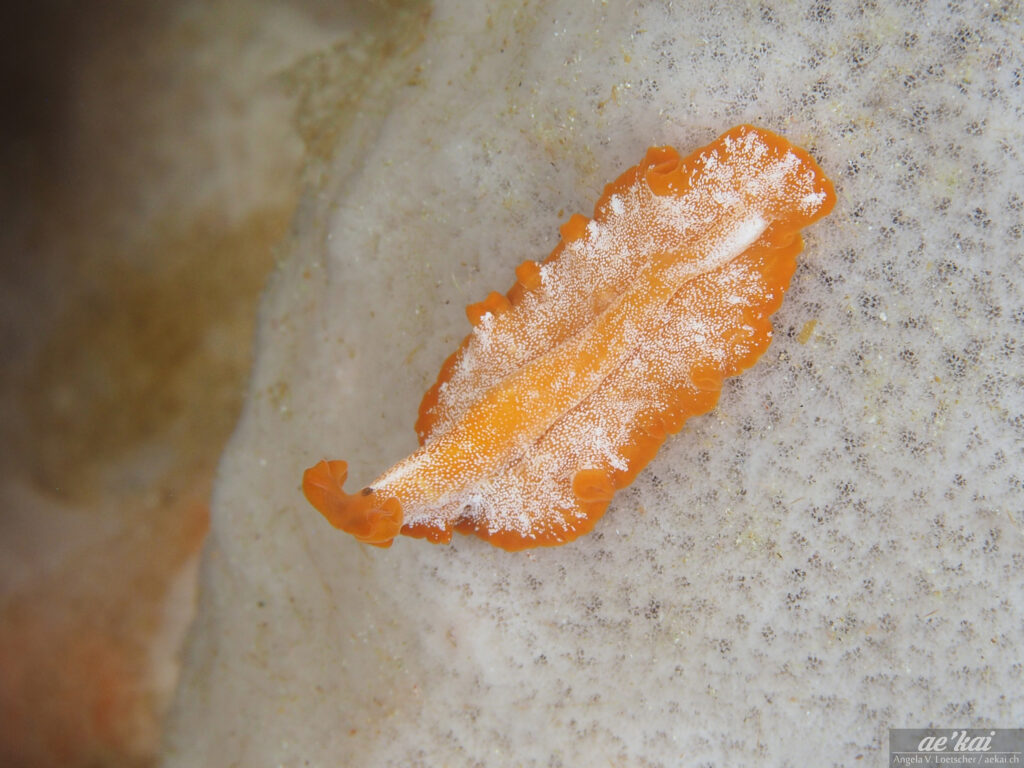
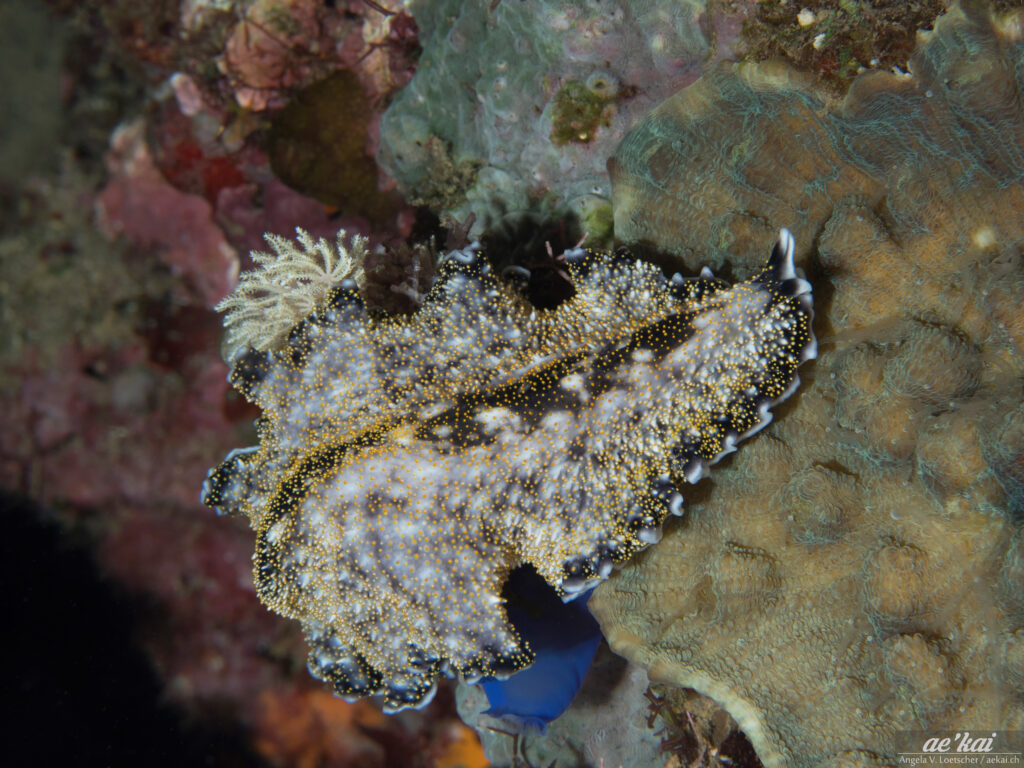
(Acanthozoon alderi)
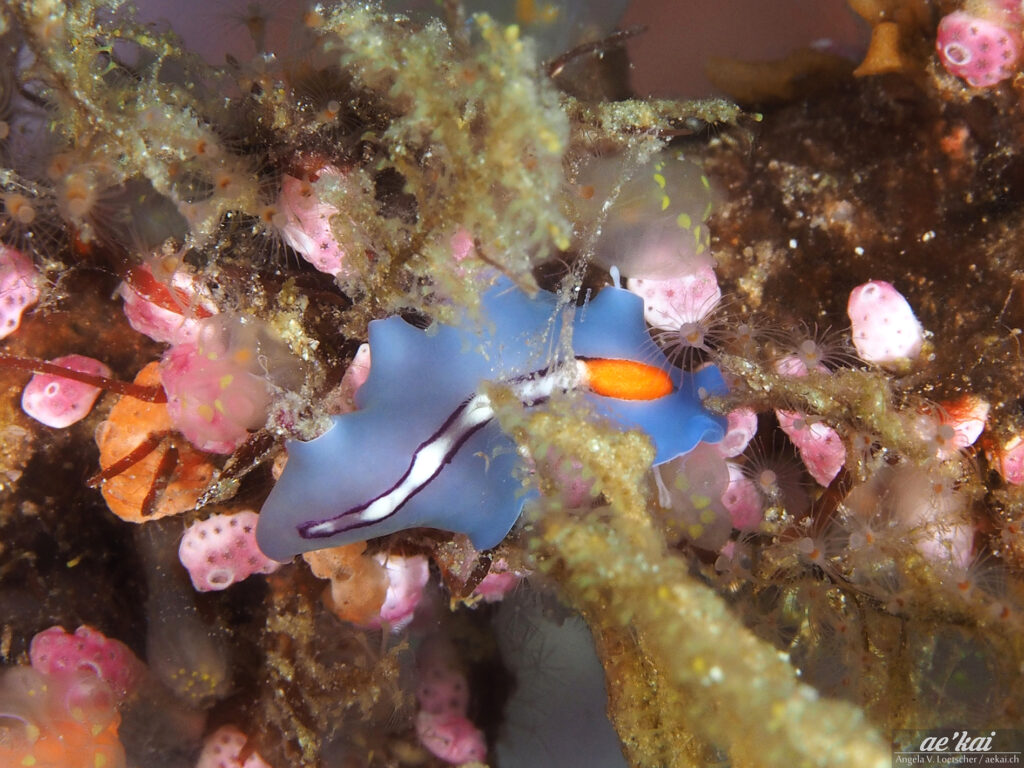
(Pseudoceros liparus)
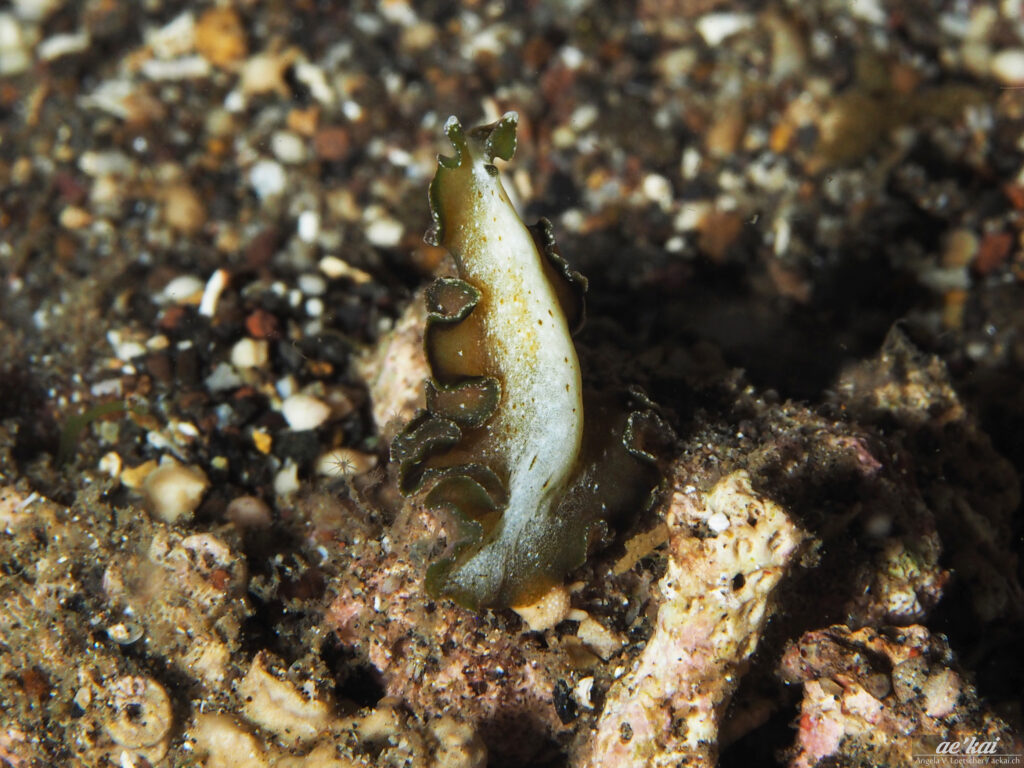
(Tytthosoceros lizardensis C)
